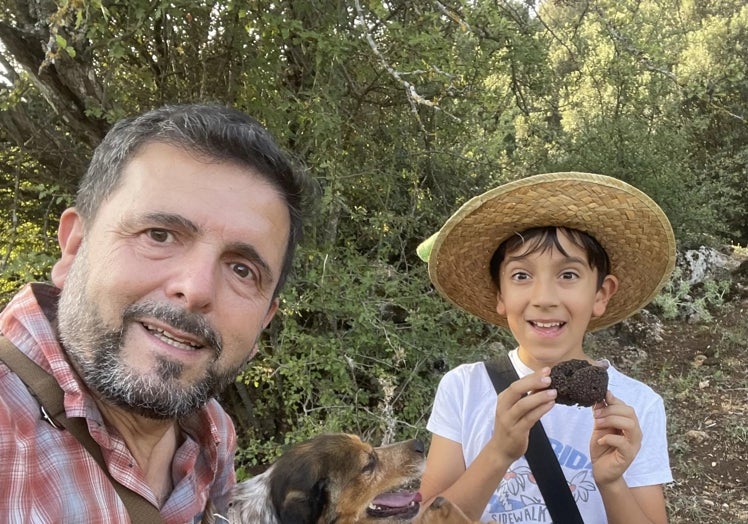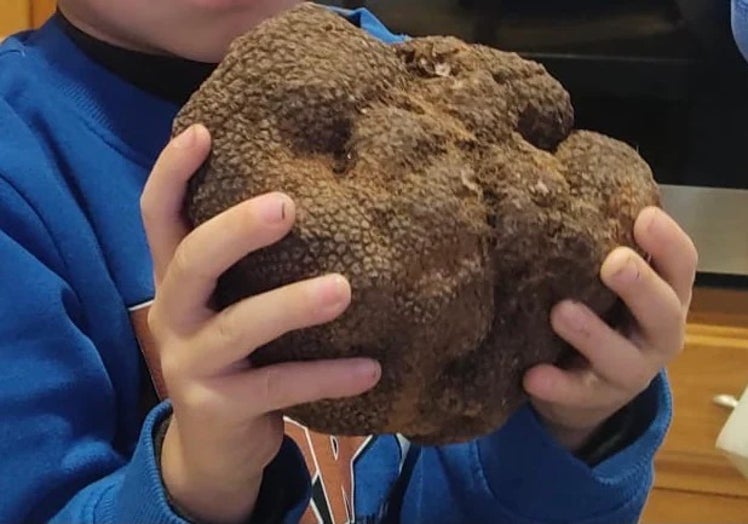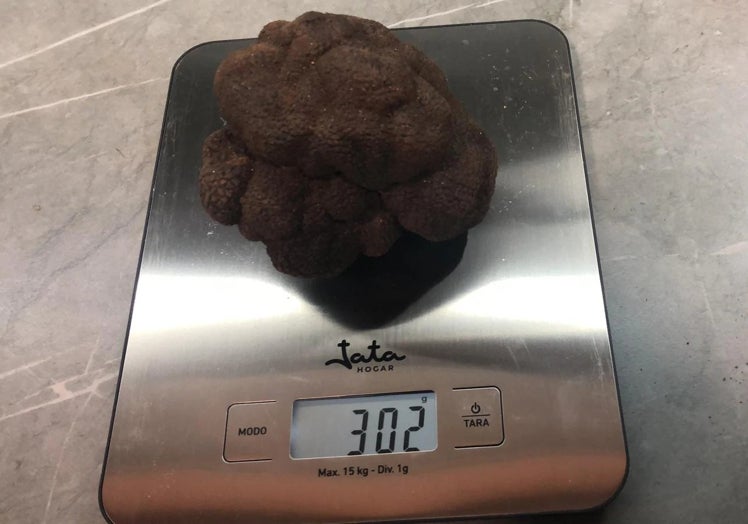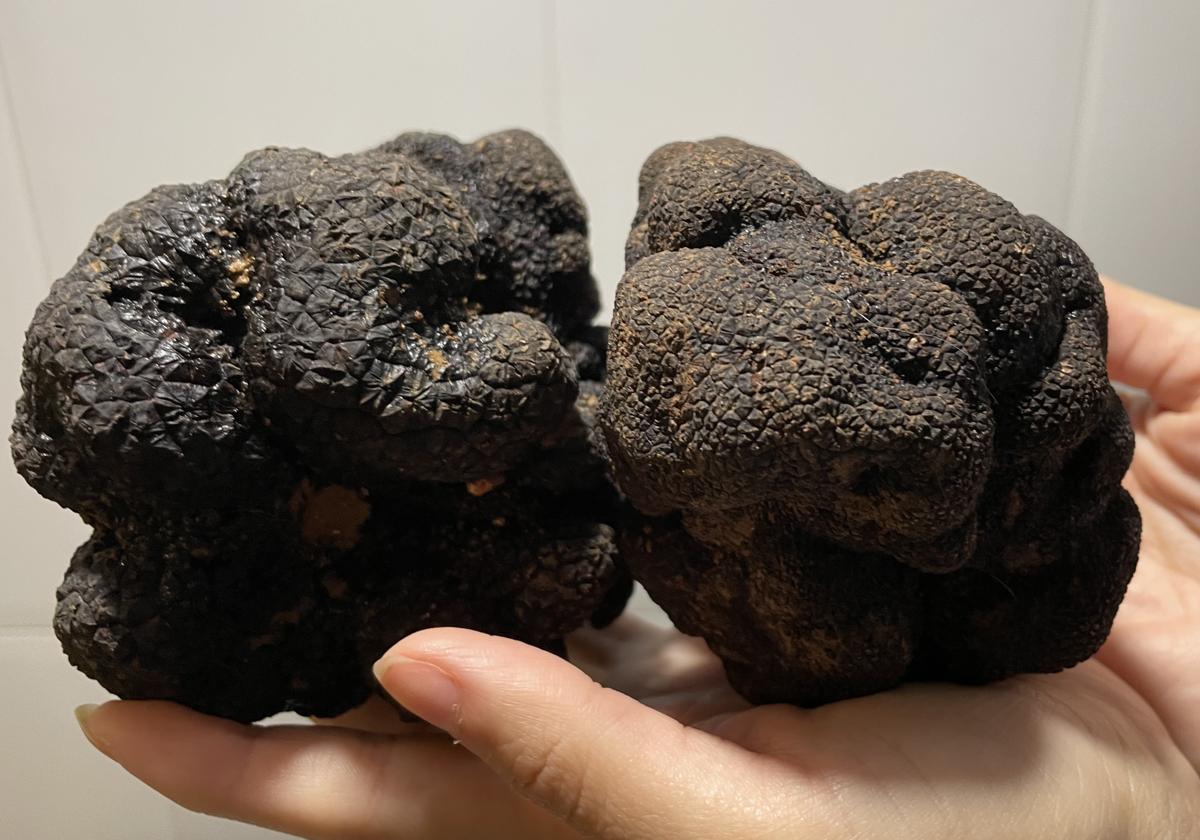The black diamond of the kitchen that's found in Almeria
The black truffle is one of the most expensive and coveted delicacies in global gastronomy
David Roth
Thursday, 16 May 2024, 10:06
The black truffle, or Tuber melanosporum, is one of the most expensive and coveted ingredients in global gastronomy. A mushroom that grows underground, giving off a characteristic and powerful smell that helps some animals with a good sense of smell dig them up and eat them themselves or even to help a human companion to find them.
What few people know is that Andalucía and Almeria are the origin of this delicacy, which costs around 1,500 euros per kilo. Dr Baldomero Moreno is a biologist and mycologist who has had a close relationship with the world of truffles for some 30 years.
At that time only two species had been mentioned in the region, but in his doctoral thesis he was able to catalogue more than a hundred different species. At that time "Andalucía became the most biodiverse region in the world in terms of truffles," says the scientist.

Moreno continues to publish studies, research and books about truffles and in one of his studies he revealed that Andalucía "is the origin of the truffle in the world", despite the fact that along with mushrooms, truffles do not feature much in traditional Andalusian cuisine. For this reason, he is currently helping new and old truffle growers to enhance the value of this natural resource on their farms.
In order to do this he collaborated in a plan drawn up by the Junta de Andalucía in 2001 called Plan Cussta or Plan de Conservación y Uso Sostenible de las Setas y Trufas de Andalucía (conservation plan and sustainable use of mushrooms and truffles): "a revolution in the knowledge of mushrooms".

"Everything is based a little on the biological and evolutionary history of the truffle," the expert explains. "The truffle is an organism that is neither a plant nor an animal, but belongs to the fungi kingdom. But it needs to live at the expense of a plant, "which in this case is the holm oak". So, "when a plantation is made, a symbiotic association of the fungus with the plant is cultivated".
This is produced through the root and is known as mycorrhiza. In short, the plant offers its carbohydrate, which it produces through photosynthesis, to the truffle, from which it feeds and grows. But in exchange for what the plant offers the truffle, "the truffle absorbs water, nitrogen and phosphorus better because of the greater absorption capacity" of the fungus.
With the Mediterranean climate of Andalucía, in order to prevent it from losing water and dehydrating in summer, the truffle began to grow under the ground, "because it is damper and there is less water loss". It was an survival mechanism for living in hot and very cold climates.
Being underground the truffle sought a mechanism for transporting its spores. It did so by producing a distinct smell that attracted animals, which in turn transported elsewhere by the animals. "For the truffle to continue to exist it needed someone to eat it, in other words, it is made to be eaten and excreted elsewhere to germinate again."
In Almeria
In Almeria there are three varieties. Firstly, the Andalucía black truffle, "which has a special smell and is the origin of all the truffles in the world". There is also the wild truffle, known as the summer truffle, which grows in the wild holm oak groves of Almeria and is of good quality, "but not as good as the black truffle", and finally, the Almeria desert truffle, "of less value, from 50 to 100 euros per kilo", and which is found in the arid earth of Almeria.
Salvador Rodríguez is one of those truffle growers from Almeria who has followed the biologist's teachings. He has four hectares of holm oak in Laujar de Andarax, at an altitude of almost 2,000 metres where his black truffles have been growing since he 'planted' them seven years ago.

The first thing he had to do was analyse the soil, "which must be chalky and have optimum pH levels, and from there, if it is good, it will work", the farmer explains. Although there was still the challenge of altitude, because "from 1,500 metres upwards it doesn't usually work, but the situation is not the same in Almeria, where it is less cold and where the plants grow well".
It has only been in the last three years that his hard work has really started to show results, but it is at this final stage that the truffles really begin to take off.
When Rodríguez bought the plant from the nursery, it came with the mycorrhiza done. But he also made use of some truffle nests, a special peat that comes with more spores and food for the plant.
The first truffle was picked three years after starting. "The following year, "I took two kilos; the season before that, 700 grammes, which is a bit of a disappointment. But this year we have reached three kilos". All thanks also to his little helper, Kira, a little whose sense of smell enables her to locate the truffles underground and without whom "we would be talking about nothing".

Production does not allow him to have truffles all year round, but Rodríguez has begun to distribute them to various select restaurants, including Joseba Añorga's Taberna Vasca, who is known for using truffles in his cuisine. The taberna opened its doors in 2007 and soon became very popular.
In the kitchen
When he introduced truffles to the menu, he took "a lot of risks, because truffles are an expensive product" Añorga acknowledges, admitting that the taberna didn't really know how to incorporate them into the menu. "We had to transmit to the client a product, as it were, that you see in luxury restaurants because of the cost. Many people had seen it on television, others had been lucky enough to try it, but we are talking about 2009," Añorga explains.
Gastronomically speaking, the truffle "lasts a short time". It "dehydrates and we use it a lot with eggs, which is my favourite dish. Truffles and eggs are the marriage par excellence," he says.

They also make oils when there are not many truffle leftovers, "which are very difficult to treat. We confit them in oil at a low temperature to condense all the aromas and flavours and then use it on the few occasions when we don't have fresh truffle," the chef reveals.
As it has "such a strong aroma and such a peculiar flavour, it is not advisable to combine it with another ingredient with a very strong flavour such as meat or fish". He goes on to say, "I prefer more subtle flavours, so that one thing stands out without covering up the other," says the chef.
The truffle "fills your mouth with one aroma and then lets you move on to another", he adds. "The truth is that it is a beautiful world, because it is a direct contact with the earth, with the animal, with everything," he concludes.
